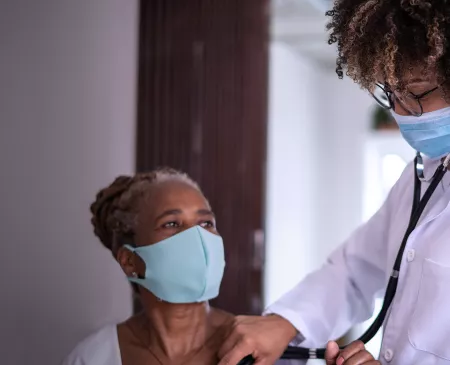The Buzz This Week:
The horrific mass shooting this week at Robb Elementary School in Uvalde, TX, which happened just 10 days after a white supremacist gunman killed 10 people at a grocery store in Buffalo, NY, marks more than 200 mass shootings (defined by The Gun Violence Archive as any incident in which 4 or more people were shot or killed, excluding the shooter) in the United States in 2022. It is the 27th school shooting with injuries or deaths this year.
Gun violence has been on the rise for numerous years and has increased more significantly since the pandemic began, with more than 45,000 Americans dying by a gun in 2020, a 15% increase over 2019, and over a 40% increase from 2010. Almost half of those deaths—nearly 20,000 people—were homicides. The Gun Violence Archive recorded more than 60% more deaths by gun (excluding suicides) in 2021 than 2014 (its founding year). It is the most ever recorded deaths in the 8 years they have measured gun-related deaths. The public health crisis of gun violence disproportionately impacts communities of color.
Compared to other countries, U.S. civilians own double the number of firearms per resident as the next highest country, with more guns in circulation than people, according to a 2018 Small Arms Survey. Numerous studies have shown access to guns contributes to higher gun-related homicide rates. The vast majority of homicides in the U.S. (nearly 80%) are carried out by gun, compared to 37% in Canada, 13% in Australia, and 4% in the United Kingdom. A study in the American Journal of Medicine found that of all firearm deaths across 24 high-income countries, 82% occurred in the U.S., and for the population aged 0-14 years old, the number was 91%—giving the U.S. a gun homicide rate 18 times higher than that of other developed nations. As of 2020, firearm injuries surpassed motor vehicle crashes as the No. 1 cause of death for children 0-19 years old in the U.S., predominantly driven by an increase in gun homicides.
Why It Matters:
The trauma of gun violence extends well beyond the shooting itself, leaving survivors and communities with considerable emotional, physical, and financial burdens. People who survive gun violence—approximately 85,000 Americans each year, amounting to an estimated 4% of U.S. adults—face ongoing trauma and long-term health conditions, including high rates of Post-Traumatic Stress Disorder (PTSD), chronic pain, and poor mental health. They also face impacts to financial well-being from expensive medical costs (both immediate for initial wounds and ongoing for readmission, nursing, and other care), job loss, or inability to function in a traditional work environment. An entire generation of Americans has been impacted by the threat and fear of school shootings. A 2018 poll found 3 out of 4 Americans between the ages of 15 and 21 said that mass shootings were a primary source of emotional stress.
Gun violence is preventable, and other countries have achieved significant reduction or elimination of mass shootings with the passage of gun reform. The American Academy of Pediatrics and American Public Health Association recommend the following immediate actions:
- Commonsense gun policies: This includes criminal background checks, reinstating assault rifle bans, safe gun storage, and expanding extreme risk protection orders, which allow temporary prevention of obtaining or removal of a firearm from those deemed at risk to themselves or others.
- Prevention research: Very limited data and research exist on the causes of gun violence, what factors put children at highest risk for gun violence, and the impact of certain gun safety programs. In 2020 and 2021, Congress allocated $25 million for data collection and research to the Centers for Disease Control and Prevention (CDC) and the National Institutes of Health (NIH). More funding is needed to adequately research gun violence.
- Violence prevention programs: Programming is needed to support youth most at risk of facing gun violence and addressing trauma and healing for those who have experienced it. Funded research can help to determine which of these programs are most successful and should be expanded more broadly.
Related Links:
APHA:
Gun Violence Is a Public Health Crisis
NEJM:
Current Causes of Death in Children and Adolescents in the United States
Everytown:
When the Shooting Stops—The Impact of Gun Violence on Surivivors in America







